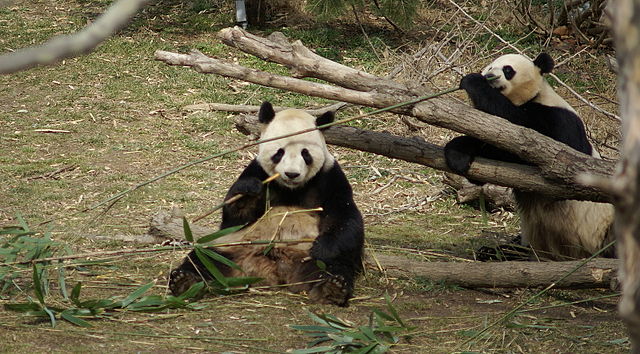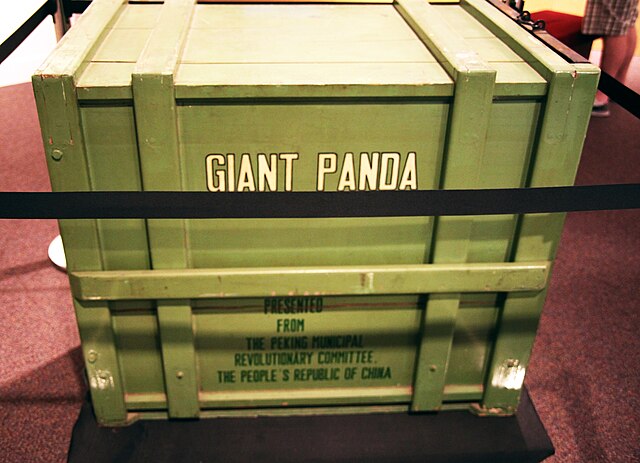
Panda diplomacy, a key aspect of China’s cultural diplomacy, is currently experiencing a noticeable revival on the global stage, creating a prime opportunity for a more detailed analysis beyond just a news report. China employs this unique form of cultural diplomacy to build goodwill, strengthen international relationships, and promote a positive image worldwide. So, let’s uncover its layers and examine its latest developments.
The return of pandas to the USA
In October 2024, two new pandas, Bao Li and Qing Bao, arrived in Washington, D.C. They were the first pandas to enter the United States in 21 years. After a brief period of acclimatisation and quarantine, they made their public debut at the Smithsonian’s National Zoo on January 24, 2025, to much excitement. This marked a notable shift in the dynamics of relations between China and the United States. Following a period of slightly more than a year during which no pandas were physically present in U.S. zoos, the return of pandas is more than just zoological news. It signals a diplomatic recalibration. The National Zoo’s agreement is for the pandas to stay until 2034, generating major public excitement, millions of dollars in annual contributions to China’s conservation efforts, and, importantly, headlines around the world.

This gesture followed President Xi Jinping’s November 2023 announcement of new panda loans during his meeting with U.S. President Joe Biden. It served as a counterpoint to years of hardline political rhetoric and trade disputes, sometimes referred to as the “wolf warrior” era of Chinese diplomacy. By offering pandas again, China subtly communicates a willingness to stabilise and enrich its relationship with the United States through cooperation rather than confrontation.
Interpreting the role of panda diplomacy in global relations
Panda diplomacy as an indicator of bilateral relations
The timing of China’s panda loans highlights their role as a symbol reflecting the state of bilateral relationships. Pandas disappeared from U.S. zoos during a frosty period in relations. Still, they returned when leaders expressed willingness to manage differences and seek areas of constructive cooperation, such as climate change, communication, and managing global risks. The message is clear to diplomats and the public: when pandas arrive, it signals diplomatic warming, or at least an openness to diplomatic engagement going past complex politics.
A complex tool beyond “symbolic diplomacy“
Panda diplomacy is a long-term, strategic investment. It is not just about endearing China to foreign publics. It also shapes perceptions of mutual trust, builds diplomatic goodwill, and sets expectations for reciprocity in trade, security dialogue, or scientific exchange. It operates not only as a charming cultural symbol but also as a strategic diplomatic instrument intertwined with broader economic and geopolitical objectives. When pandas leave or do not arrive, as happened before 2025, it serves as a quiet rebuke or withdrawal of trust. When they return, as now, China indicates a fresh commitment to strengthening the relationship.

Operational considerations
While pandas remain a captivating symbol of China’s cultural influence and continue to attract large public interest, panda diplomacy presents challenges. The welfare and care of pandas abroad are carefully monitored by Chinese authorities and partner institutions to ensure the animals’ well-being. Additionally, growing global awareness around animal welfare and scepticism about diplomatic gestures mean panda diplomacy must be managed transparently and sincerely to maintain its positive impact. If the gesture is perceived as overly transactional or purely symbolic, its effectiveness as a diplomatic influence tool may diminish.
Relevance of panda diplomacy in an era of polarisation
The return of panda diplomacy to the U.S. demonstrates that even in an era of heightened polarisation and suspicion, symbolic gestures retain their power. They offer political leaders a positive storyline to counterbalance negative news, and beneath the surface, help keep open channels for more substantive dialogue and negotiation.
Other recent global examples
Just as the return of pandas to Washington, D.C. signals diplomatic recalibration, other recent panda loans highlight the diverse ways China employs this diplomatic influence tool worldwide:
Qatar (2022): Si Hai and Jing Jing became the first pandas in the Middle East, arriving in Doha to coincide with the FIFA World Cup. Their arrival highlighted not only growing China-Qatar ties but also showcased China’s goodwill during a globally watched event, positioning Beijing as a partner in the region’s cultural and scientific life.
Finland (2018): The delivery of Hua Bao and Jin Baobao was more than a zoological gift; it came amid heightened Belt and Road Initiative (BRI) cooperation and new Arctic development talks. This symbolised a deepening of Finland’s relations with China in both economic and environmental spheres.
Denmark (2019): Two pandas were sent to Copenhagen Zoo shortly after a series of BRI-related trade and investment deals and a high-level state visit. The pandas embodied the strengthening Danish-Chinese partnership and openness to collaboration within Arctic discussions.
Japan (2023–2024): The fluctuations in panda exchanges with Japan directly reflect the state of relations between China and Japan. Several pandas returned to China as previous loan terms expired, coinciding with shifts in diplomatic dialogue. Renewed talks often pave the way for new panda arrivals, making the animals a reliable indicator of the political climate.
Germany, the Netherlands, Malaysia, and France (recent years): These countries have housed pandas through ongoing or recently renewed partnerships, often timed around diplomatic anniversaries, trade agreements, or joint research breakthroughs. Panda loans in Germany, the Netherlands, Malaysia, and France also often accompany scientific collaboration and serve as focal points for cultural events that deepen mutual understanding. This consistent pattern shows that panda diplomacy signals trust and strategic intent.
These examples make it clear that panda diplomacy adapts to unique national contexts and remains closely connected to major diplomatic, economic, or cultural milestones. Whether marking the inauguration of a major event, an anniversary in bilateral ties, or the deepening of cooperation on critical global issues, these charismatic ambassadors continue to reflect China’s foreign policy priorities and the evolving nature of international engagement.
Panda diplomacy’s significance moving forward
The resurgence of panda diplomacy, exemplified by the new arrivals in Washington, D.C., is a telling indicator of China’s evolving approach to global relations. While this form of cultural influence is not a cure-all for deeper rifts, panda loans remain a powerful diplomatic currency. They signal openness and provide both sides with an opportunity for deeper engagement when political dialogue hits a roadblock. The future significance of panda diplomacy will depend on how China and partner countries build on its goodwill beyond symbolism into lasting cooperative partnerships. Ultimately, their true value, like the fate of the relationship itself, will depend on how sincerely both sides build on this goodwill, not just on how adorable the pandas appear on opening day.
Click to show page navigation!




